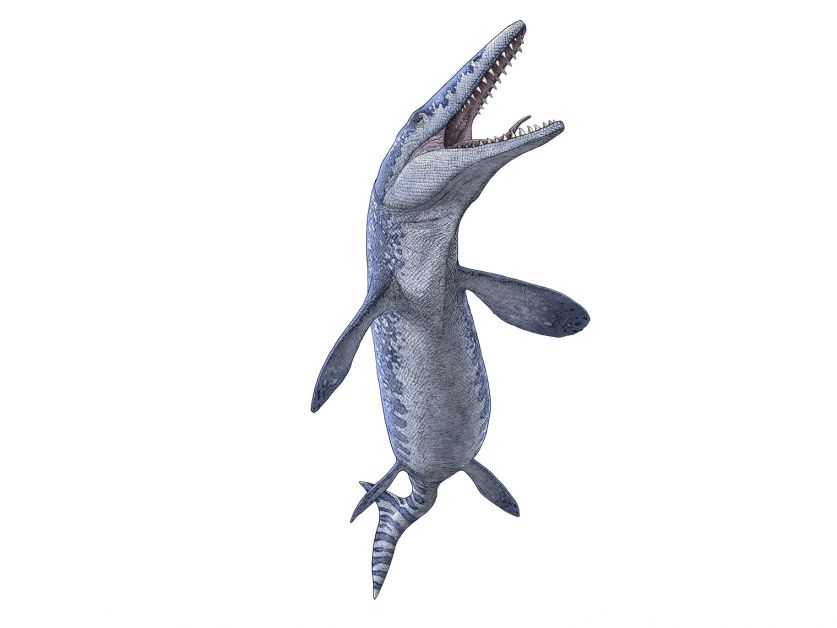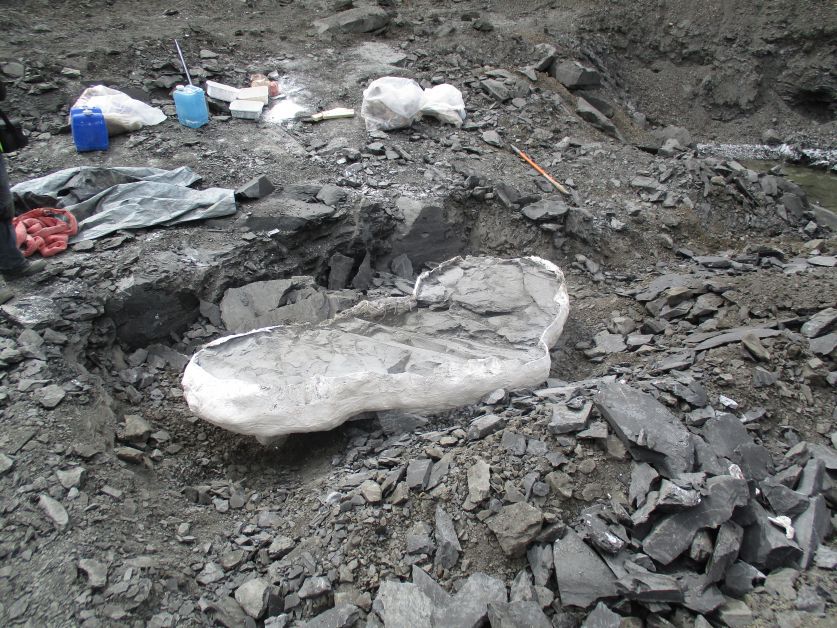
A 70-million-year old, komodo dragon-like “sea monster” is in collections at the Royal Tyrrell Museum this week after being unearthed at a Lethbridge mine earlier in June.
The eight foot long specimen of a mosasaurus, an ocean prowling carnivore with sharp, slender teeth, was found by a diligent heavy equipment operator who then contacted palaeontologists at the Royal Tyrrell Museum. It isn’t a complete specimen but includes the skull and about half of the body.
“It’s well preserved, it should tell us a lot about the animal,” says Dan Spivak, head of the museum’s resource management program. “We have a few other specimens, I’m not sure how many from that area, but each specimen tells us something different and something unique about how this animal evolved, how it interacted with its environment, how and what it ate, that sort of thing.”
“Often times when people think of a sea monster, the mosasaurus is what tends to come to mind. In some ways it was a bigger komodo dragon type animal but would have a longer, pointier skull, and flippers and a tail more adapted to swimming than walking on land,” Spivak says. “They seemed to be generalists that were feeding on several different things, but definitely a carnivore.”
On June 12, miners using track hoes came across the specimen encased in shale. Typically, the museum has the company move to another part of the mine to continue working. Mine staff sent photos to the museum and later that week a small reconnaissance crew visited the site to assess what kind of equipment would be needed and to generate a timeline. A larger crew was then sent to excavate the specimen from the rock, with the help of the mine’s heavy equipment, where it was put in a jacket and transported by road to the Royal Tyrrell Museum.
The specimen will remain in collections until it is processed, analyzed, and then museum staff will determine whether it will be displayed or stored in their collections. The process can take months depending on how much preparation the specimen needs and the type of stone encasing it.
Part of Spivak’s job is to work with companies to ensure palaeontological finds are reported and processed legally and he credits the diligence of the mine operators who found the specimen.
“There is a legal requirement to report this sort of thing, but also companies do it trying to preserve an important part of Alberta’s history.”
But that isn’t always the case.
“Sometimes you hear stories that it isn’t carelessness but there is active intent to basically skirt the law -- ‘if nobody sees it, nobody knows it exists’ sort of thing -- and so we’ve been trying to get the word out that we don’t shut projects down when we find fossils. Our goal is to get out to where these fossils are located and get them out of the ground as quickly and safely as possible.”
Photos courtesy of the Royal Tyrrell Museum of Palaeontology. Illustration by Julius T. Csotonyi.






















